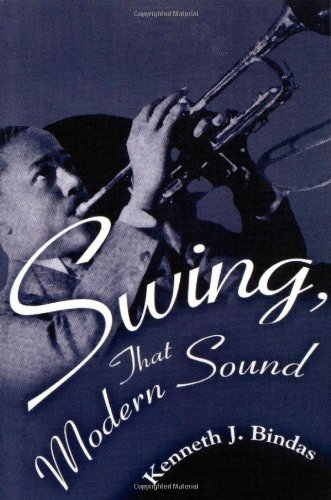

Most ebook files are in PDF format, so you can easily read them using various software such as Foxit Reader or directly on the Google Chrome browser.
Some ebook files are released by publishers in other formats such as .awz, .mobi, .epub, .fb2, etc. You may need to install specific software to read these formats on mobile/PC, such as Calibre.
Please read the tutorial at this link: https://ebookbell.com/faq
We offer FREE conversion to the popular formats you request; however, this may take some time. Therefore, right after payment, please email us, and we will try to provide the service as quickly as possible.
For some exceptional file formats or broken links (if any), please refrain from opening any disputes. Instead, email us first, and we will try to assist within a maximum of 6 hours.
EbookBell Team

4.1
60 reviewsIt was for stage bands, for dancing, and for a jiving mood of letting go. Throughout the nation swing re-sounded with the spirit of good times.
But this pop genre, for a decade America's favorite, arose during the worst of times, the Great Depression.
From its peak in the 1930s until bebop, r & b, and country swamped it after World War II, swing defined an American generation and measured America's musical heartbeat. In its heyday swing reached a mass audience of very disparate individuals and united them. They perceived in the tempers and tempos of swing the very definition of modernity.
A survey of the thirties reveals that the time was indeed the Swing Era, America's segue into modernity. What social structures encouraged swing's creation, acceptance, and popularity? Swing, That Modern Sound examines the cultural and historical significance of swing and tells how and why it achieved its audience, unified its fans, defined its generation, and, after World War II, fell into decline.
What fed the music? And, in turn, what did the music feed? This book shows that swing manifested the kind of up-to-date allure that the populace craved. Swing sounded modern, happy, optimistic. It flouted the hardship signals of the Great Depression. The key to its rise and appeal, this book argues, was its all-out appropriation of modernity--consumer advertising, the language and symbols of consumption, and the public's all-too-evident wish for goods during a period of scarcity.
As it examines the role of race, class, and gender in the creation of this modern music, Swing, That Modern Sound tells how a music genre came to symbolize the cultural revolution taking place in America.
Kenneth J. Bindas is an associate professor of history at Kent State University, Trumbull Campus, in Warren, Ohio. He is the author of All of This Music Belongs to the Nation: The WPA's Federal Music Project and American Society, 1935--1939.